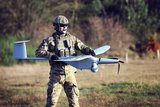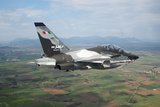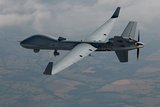Bell Boeing starts work on Osprey nacelle improvements
CV-22 Ospreys from the USAF 1st Special Operations Wing, pictured in August 2021. (Photo: USAF/Senior Airman Miranda Mahoney)
The first USAF CV-22 Osprey tiltrotor aircraft arrived at the Bell Amarillo Assembly Center on 21 September to undergo nacelle improvement modifications.
This is part of an effort by Osprey manufacturer Bell Boeing to increase ‘reliability and maintainability’ of the aircraft for the DoD by increasing readiness rates while driving down sustainment costs, Bell announced on 23 September.
About 60% of maintenance man-hours on the CV-22 are spent in the nacelles.
US Naval Air Systems Command (NAVAIR) awarded Bell Boeing an $81 million contract in December 2020 to complete nacelle improvements on the CV-22 fleet. The contract covers completion of non-recurring elements, fabrication of nine kits, and installation of one kit.
Work on the contract could continue beyond 2025 if NAVAIR exercises options for fabrication and installation.
NAVAIR completed the first flight with nacelle improvements on a USMC MV-22 test aircraft on 23 April 2021 (the MV-22 has an identical nacelle structure to the CV-22).
Related Equipment in Defence Insight
More from Air Warfare
-
![Portugal signals interest in establishing A-29N final assembly line]()
Portugal signals interest in establishing A-29N final assembly line
As the launch customer for the NATO-configured variant, Portugal also took delivery of the first five A-29N aircraft from its order for 12, placed in 2024.
-
![Leonardo signs contract on Austria’s M-346 aircraft order]()
Leonardo signs contract on Austria’s M-346 aircraft order
The first of the 12 M-346 aircraft are expected to be delivered to the Austrian Air Force by 2028, according to the company.
-
![2025 UAV market review: $7.8 billion in new contracts signed as US leads spending]()
2025 UAV market review: $7.8 billion in new contracts signed as US leads spending
Qatar and Indonesia followed the US’s high spending on new uncrewed aerial vehicle contracts across 2025, while MALE and micro drones and loitering munitions were particularly popular subcategories this year.






















